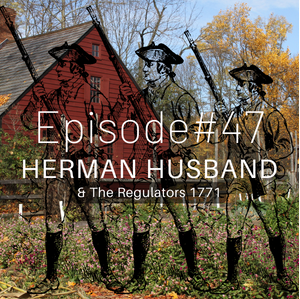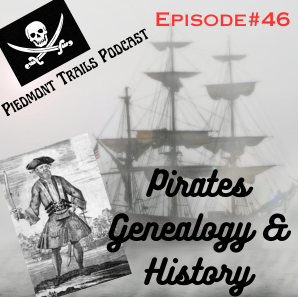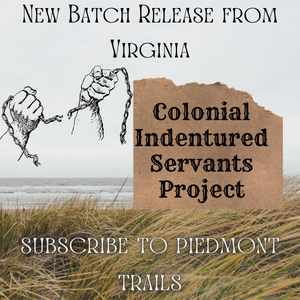Located in the heart of the piedmont area of North Carolina, lies a rich history filled with legends, folklore, facts and great stories. When one travels along NC Highway 66 through the small town of Kernersville heading south, the road winds and turns just as it did during the late 1930’s. Dating back to the late 19th century, the Fayetteville Road traveled on a more westerly route and if you were traveling in 1842, this road would have taken you to the crossroads of Salisbury Deep River Road and the center of Browntown, NC.

To provide a detailed history of this small hometown, a bureau was located in 1928 in the possession of Dr. D E Hilton of High Point. An inscription was written on the back of the piece stating the following; “Browntown, North Carolina, Davidson County, March the 13th in the year of our Lord one thousand eight hundred and forty eight. Being the seventy second year of the Independence of the United States of America. This bureau was built for Paris Horney by William Pickard of Browntown, which was founded in the year 1791.” Pickard was a well known cabinet maker in the area. Refer to the map above for the exact location of his shop and home.
Traditional stories tell us that Betty Brown, a widow, with six children migrated from Pennsylvania during the Revolutionary War and settled in the area along Asel’s Creek. The facts confirm that Betty and her children, Joseph, Absalom, Ephriam, Jacob, Seth and Alice all appear on church records of Abbotts Creek Baptist Church. In fact, Betty is listed as a member of the church in the year of 1832. Absalom Brown, her son, was the first and only mayor of the town when it was incorporated in 1842. The town commissioners were Dr. Alfred Folger, Austin Raper, Ezekiel Hitchcock and William Shields. At that time, 13 dwellings were located in the town. They consisted of a post office, hat shop, shoe shop, two cabinet makers, saddle shop, two blacksmith shops, tailor shop, a mill and 3 other stores. There were two churches, Abbotts Creek Baptist and Bethel Methodist Church, both located just outside the town limits.

Six doctors praticed medicine in Browntown. Dr. Folger, Clemmons, Wood, Smith and Echols were 5 of them. General Greene passed through the area prior to Browntown becoming a town. An memorial was erected by DAR(Daughters of the American Revolution).

On the evening of August 31, 1859, John Robinson’s circus arrived in Browntown staying the night and performing the next day. One of the elephants chained near a corn crib, escaped during the night. The elephant removed a log from a building and helped himself to a barrel of oats. This story was recited for generations throughout the area.

Political elections prior to the Civil War, were held in the month of August and everyone would gather around Browntown and the “Election Oak”, a huge oak tree located in the center of town. Music was provided to the large crowds by Joseph Brown and his family on stringed instruments. Joseph Brown operated the shoe shop in town. The “Election Oak” was known as the spot where the boys would play their game of marbles in the dirt and where they would later sign up for service during the Civil War.
North of the town lies the area where Bethel Methodist Church was located and the “Old Burying Ground” The church was formed in 1800 and built by John Bodenheimer but it is estimated that the cemetery dated several years before with estimations as early as 1752. Many of the first settlers were buried in this location but are now lost forever. The church held it’s last service in 1864. Years later, the land was sold to a local farmer who removed the headstones and plowed over the graves. This was recorded in the newspaper, “High Point Enterprise” in 1928. No existing church records or burial records have been located.

The beginning of the end for Browntown originated with a toll road construction of the Plank Road. This road was made of wood nearly 6 to 8 inches thick and would charge a toll fee to persons who wished to travel upon it. It was very costly to maintain and the company dissolved years later. This road by-passed Browntown and other smaller settlements began to thrive nearby. Also, by 1860, the railroad passed the town altogether and this allowed many to relocate and slowly the little town died. Once a vibrant community, nothing remains of Browntown today. During the late 1920’s, a newspaper reporter in search of the town, was able to locate the hat shop building and remains of a dam along Asel’s Creek. He reported several blooming shrubs struggling to survive among the over growth. But, today, they have dissappeared from view.

Genealogy & Biography of Browntown Citizens
Barnabas Payne- built the only brick house in Browntown. Married Asel Hedgecock.
Haley Brown-a large slave owner and surveyor by trade. Son, John, died in December of 1856 and was buried on the farm.
John Brown-blacksmith of Browntown
Lorenzo Dow-Minister-first preached from his wagon in Kernersville in October of 1803.
James Younger-Welsh minister. Daughter, Anna married James Evans circa 1758.
Moses Evans-son of James and Anna Evans-very well educated man and loved debating. It is said that Moses once recited at Pine Stump School House that one day carriages without horses would run. Occupation-music teacher. Buried at Abbotts Creek Church.
William Pickard-occupation-cabinet maker. Wife-Sarah. He kept a journal of daily events that occurred in Browntown. Children-Moses,Wilson and Martha. Moses went to Missouri and married. Wilson married Melfina Daniels and Martha died young.
Dr. Folger-author of book on the subject of making medicine from roots, herbs and barks. Only copy known to exist is located in Indianapolis, Indiana.
Asel Hitchcock-arrived in area circa 1762 from Pennsylvania. Small portion of the rock foundation of his house remains. Son-Ezekiel.
Conclusion
Special thanks to High Point Enterprise Newspaper, Personal Papers of Early Hedgecock, Kernersville Library, Abbotts Creek Baptist Church and to the many people involved with this project.
Categories: Featured Articles











You’re fishing a place close to my family tree void. You’re saying Davidson County and I’m thinking Moore & Montgomery. That’s where it all goes South for me. I love the details because it fleshes in the color of the era. I even have Brown’s but they are mostly peripheral to my Richardson’s, Bailey’s, Cheek’s, Deaton’s, Isaac(k)s and the ubiquitous Smith’s. Something happened in circa Am. Rev War and an Isaac(k)s got in our Chicken coop. 200+ years later, up jumped DNA and threw a monkey wrench in what I thought I knew. Keep up the good work. You touch more than you know in ways one cannot imagine.
LikeLiked by 1 person
Thank You so much, Tom, for the kind words. Stay in touch on the findings of you family tree.
LikeLike
When William Cheek was born on December 22, 1728, in London, London, England, his father, John, was 17 and his mother, Elizabeth, was 13. He had ten sons and ten daughters. He died on March 16, 1802, in Surry, North Carolina, at the age of 73.
LikeLiked by 1 person
Reblogged this on Bobertelliott's Blog.
LikeLike
I would like to try and locate the area where the list graves were. Can anyone give me approximate intersections to look for on google earth?
I am a diviner/douser, and am able to locate unmarked graves.
I would love to help locate the remains of these lost souls.
Thanks
LikeLiked by 1 person
The graves were destroyed during the mid 1920’s due to plowing and planting by a local farmer. The site is now a private residential housing development.
LikeLike
Over the past few years, I have researched several of ny family lines who migrated through Browntown. I have mapped out a few of the properties as well as possible. And I am still digging for information, reaching a little further back, or learning of new connections occasionally. The cemetery of the Abbotts Creek Primitive Baptist Church, has begun to be very familiar. Martram Glasscock and 1st wife Susannah Ball settled there around 1805, She is a cousin to George Washington being a descendant of William Ball. Martam Glasscock is the son of Dr George Glasscock who served in the Revolutionary War at Guilford, and provided medicine. I would need to study more on his role there. Phillip Alston had Dr George Glasscock murdered by one of his servants. There home at the time was at Cross Hill, near Carthage in Moore county. The deed to his property there notes that the Salem to Fayetteville Rd passed through his property. Browntown being at the crossroads to that same road it seemed. As that part of my line evolved, they built their families just a few miles west in what has becoming Friedberg, where many descendants still live.George Washington, on his 1791 tour of the Southern States, stopped at at least two know family members homes on his way from Salisbury to Salem. That route believed to be just West of Browntown. One home being on the road leading from Dobson’s Crossroads, which seems to be a newer route of the time that connected to the Salisbury to Salem Rd nearby, seemingly to be along near where old hwy 8 is today.The most recent research there has been on the Daniel & Smith couple who migrated there from Brunswick, Va. Lucy Smith Lanier Daniel marrying Jacob Bodenhamer there as her 3rd husband, giving each one several children. I am currently studying Peter Evans of Chatham County and his creating of the short lived Evans Plantation there in the Deep River, Rocky River, and Cape Fear River basins. Hoping to find if there is any connection to Moses Evans of Browntown who must have been the owner of Evans’ Mill on Abbotts Creek near the Abbotts Creek Church. Thanks for all of your work you bring to us.
LikeLiked by 1 person